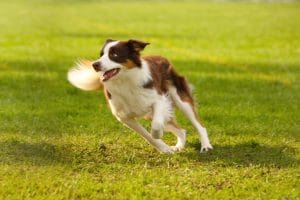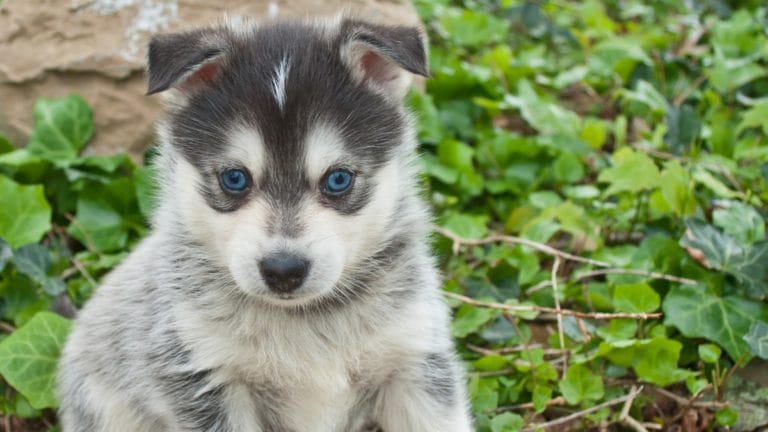With the increasing numbers of dogs competing in performance events, such as agility, and in fun casual physical activities, there’s a developing interest in understanding exactly how dogs move. Canine gaits are the foundation of all performance events. For example, in conformation, dogs must move efficiently and correctly in the ring. In agility and obedience, dogs use the walk, trot and canter at different times; dogs that move smoothly between gaits will perform better and be less likely to suffer injuries.
By understanding the appearance of the normal canine gaits, you can recognize a gait abnormality that might indicate an injury or fatigue, and take timely actions, such as resting the dog or making a veterinary appointment.
The Dog’s Unique Gaits
When studying how dogs move, it’s important not to borrow too closely from horse movement.
Dogs are built very differently from horses and that is reflected in different ways of movement. In fact, dogs use some gaits that would be considered completely abnormal in horses.
Three structural features make dogs different from horses:
- Dogs have a much more flexible spine. Horses have 17 or 18 ribs, and a large intestine full of hay in various stages of digestion. As a result, horses have minimal ability to bend their spines against these forces. In contrast, a dog has only 13 ribs and a low-volume intestine. In addition, dogs have a comparatively longer loin and strong abdominal muscles. Thus, the dog is able to flex and extend its spine producing a great deal of power for forward drive. Picture the image of a Greyhound that you have seen so often on the side of buses. You would never see a horse with its legs extended so far forward and backward. That is the incredible power of the canine spine. In fact, despite their difference in size, the stride length of a Greyhound at a gallop is approximately the same as that of a Thoroughbred horse running the Kentucky Derby!
- Unlike horses, dogs have a separate radius and ulna. These are the two parallel bones of the lower limb that extend between the elbow and the carpus (wrist). These two bones allow the dog to rotate its front limbs on their axes. The front legs are in charge of steering, just like the front wheels of a car, which allows dogs to make sharp, accurate turns and fine tune their front limb movements.
- Dogs have feet that can grip and have much more sensation than horses’ hooves. This improves a dog’s sense of where its feet are and improves its turning ability, making more complex gaits a possibility.
Canine Gaits
The basis of describing movement is the gait. The term gait simply refers to the pattern of footsteps at different speeds. Each gate is distinguished by a specific pattern of footfall and rhythm.
Dogs have four main gaits. From slowest to fastest, they are the walk, trot, canter and gallop. Between the walk and trot is a transitional gate called the amble.
Let’s start by describing the slowest gait and work our way up to the fastest.
Walk
When a dog walks, it first moves one rear leg forward, then the front foot on that same side. Then it moves the other rear foot forward, then the front foot on that side. So the pattern of footfall for the walk is right rear, right front, left rear, left front (repeat).
As a dog walks, sometimes two feet are on the ground; other times there are three. The walk is the only dog gait in which three feet can be on the ground at the same time. If you see three of your dog’s feet on the ground, you know your dog is walking.
Amble
As a walking dog speeds up, each rear foot that steps forward is quickly followed by the front foot on the same side. Eventually, it begins to look as if the two feet on the same side of the dog’s body are moving forward together. However, if you look closely, or view a slow motion video, you’ll see moments when three feet are on the ground, and thus, this gait, called the amble, is still a form of the walk.
An amble is essentially a fast walk. An ambling dog looks very ungainly. The rear end sways from side to side and the dog doesn’t pick up the rear feet, often scuffling them on the ground. But an ambling dog often moves at the same speed as a dog moving at an easy trot. This wasted energy is why the amble is not a preferred gait and should only be used briefly when transitioning from a walk to a trot, or when a tired dog wants to rest the muscles used for trotting, and use its legs in a different way for a while.
Pace
Another reason the amble is not a preferred gait is because it’s just a short step away from the pace, which is an abnormal gait for all breeds of dogs. If an ambling dog gradually speeds up, the two feet on the same side of the body that are moving forward together end up bearing all of the dog’s weight. Then the two legs on the other side of the body move forward and bear the dog’s weight. Now the dog is pacing.
In a pace, only two feet are on the ground at any given time, either both right feet or both left feet. Sometimes, owners inadvertently train their dogs to pace by cuing the dog to gradually speed up, thus moving naturally from a walk to an amble to a pace. If this happens frequently, the pace can become the dog’s habitual gait. Another reason some dogs pace is because they have more angulation in the rear legs than in the front, causing those angulated rear legs to strike the front legs when the dog is trotting. To avoid this, some dogs will pace, moving the front and rear legs on the same side forward together, thus avoiding interference.
The pace is inefficient because the dog’s center of gravity keeps shifting from side to side and the dog has to waste energy to re-center its weight. Pacing dogs cannot respond quickly when a change in speed is required, and they don’t have a wide range of speeds at which they can move without having to slow down to an amble or speed up to a trot.

Trot
The trot is truly the dog’s most efficient gait. The wolf, our dogs’ ancestor, has been known to cover 100 miles a day, mainly using the trot. When trotting, a dog moves diagonal front and rear feet forward. First, two diagonal front and rear feet move forward (for example, right front-left rear). Then, the dog’s entire body is suspended in the air for a moment. Then, the other diagonal front and rear feet move forward (for example, left front-right rear).
The trot is the best gait to use when walking a dog for exercise because it’s the only gait that requires each side of the dog’s body to work equally hard.
![]()
Canter
The canter is the main gait dogs use in the sport of agility. The pattern of footfall for this gait has two variations. In the classical canter, first one rear foot moves forward, then the other rear foot and the diagonal front foot move forward together, then finally, the last front foot moves. The order of footfall is right rear, left rear-right front, left front, or the reverse of this pattern.
The classical canter is how horses canter. But dogs use this form of the canter only about 10 percent of the time. The rest of the time, dogs use the rotary canter. In the rotary canter, the order of footfall would be either right rear, left rear-left front, right front or the reverse of this pattern. The rotary canter allows dogs to turn sharply and with greater drive from the rear.
Gallop
The gallop starts with the dog’s spine flexed and two rear feet on the ground, one foot (the lead foot) slightly ahead of the other. The dog then extends its spine, stretching its front feet forward, which hit the ground with one foot (the lead foot) slightly ahead of the other. The dog then flexes the spine to bring the rear feet forward to start the cycle again.
When the dog uses the same lead foot in the front and rear, the gait is called the classical gallop — the same type of gallop used by horses. But when the front legs are on a different lead from the rear — you guessed it! It’s called a rotary gallop — the preferential gait for dogs.
![]()
So there you have it! The four main canine gaits are the walk, the trot, the rotary canter and the rotary gallop. Dogs sometimes also use a classical canter and a classical gallop. The amble is a less preferred gait, best used when a trotting dog wants a break, and the pace is always abnormal.
M. Christine Zink, DVM, Ph.D., presents Coaching the Canine Athlete seminars worldwide, and is a consultant on canine sports medicine, evaluating canine structure and locomotion.
Featured Image: Via Shutterstock
Share:









